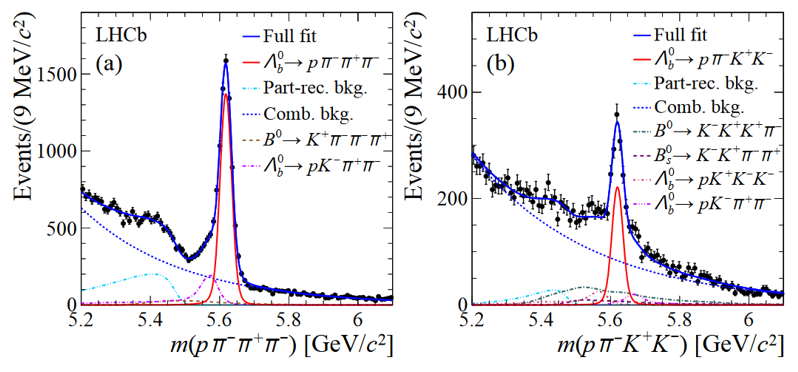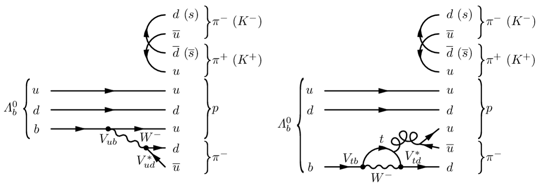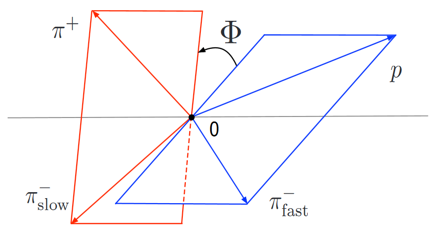Towards an important milestone in particle physics.
The LHCb collaboration has published today in Nature Physics the first evidence for the violation of the CP symmetry in baryon decays with statistical significance of 3.3 standard deviations (σ). CP violation has been observed in K and B meson decays, but not yet in any baryon decay. If the measurement is confirmed with a statistical significance of 5σ using a larger data sample, it will be the first time that an asymmetry in the decay rate of baryon and an anti-baryon is observed. In the quark model of particle physics mesons are composed of a quark and antiquark pair while baryons (anti-baryons) are composed of three quarks (anti-quarks).

In order to obtain this result LHCb physicists made the first observation of Λb0 beauty baryon decays into four other particles pπ–π+π– and pπ–K+K–, as seen in the images above showing accumulation of events at the Λb0 mass. About 6000 and 1000 decays were found for the two decay modes, respectively. The beauty baryon Λb0 is composed of udb quarks and its mass is about 6 times the mass of a neutron (udd).
The two decays proceed mainly through these two “Feynman diagrams”. It is important to measure the size and nature of CP violation in these decays in order to determine whether they are consistent with the predictions of the Standard Model of particle physics or, if not, what extensions of the Standard Model would be required to explain them.
Once the signals have been established, the analysis turned to the study of matter-antimatter asymmetries. Before being observed in the LHCb detector, the particles can “resonate” to form intermediate particles. For example, in the Λb0 → pπ–π+π– decay prominent signals of Δ(1232)0 particle decaying to a proton and a π– meson, and rho(770)0 meson decaying to a pair of π+ and π– are found. The decay products of Δ and ρ particles define two planes with a relative angle Φ, as seen in the left image below. The measured asymmetries presented in the right image show local differences and, at some values of the angle Φ, they become as large as 20%. The statistical significance of these asymmetries differing from zero is 3.3σ, leading to the first evidence for CP violation in baryon decays. In the past, analogous large effects were also seen in three-body charmless B decays. The analysis of Λb0 → pπ–K+K– decays has lower sensitivity due to a smaller number of observed events, and has not revealed evidence for non-zero asymmetries so far.
The full 3 fb-1 run 1 data sample was used to obtain this result. The number of beauty particle decays recorded by LHCb in run 2 is already larger than that used in this analysis. Therefore in the near future we will know if the evidence reported here will grow towards a 5σ observation.
Read more in the Nature Physics publication, in the CERN update for the public both in English and French, in the CERN Courier article, also in the Symmetry magazine.



